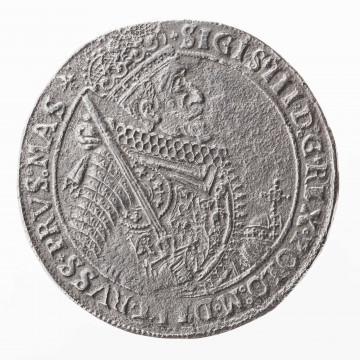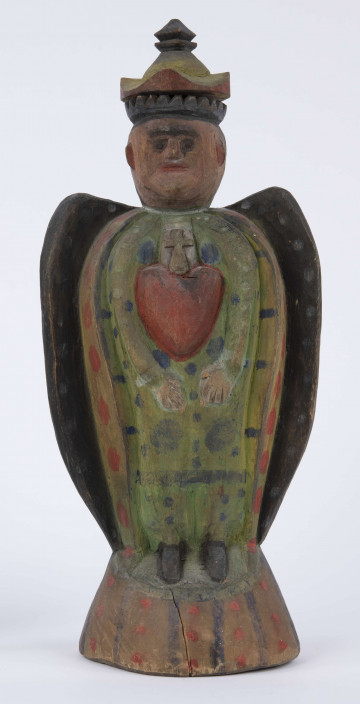
Crown thaler of Sigismund III Vasa
1628
National Museum in Lublin
Part of the collection: Treasure of the 16th–17th c. coins from Józefów on Vistula
Dynamically developing trade in the second half of the 15th century gave rise to the demand for silver coins of high purchasing power, equal to gold ducats and guilders. In Europe they were first issued in 1486 by the Archduke of Tyrol, followed in 1500 by the Elector of Saxony. These were so-called guilder pennies, containing about 27 grams of silver. Mass issuing of silver ducats, with the use of local rich silver deposits, was undertaken in 1518 in the Bohemian Ore Mountains, in the town of Sankt Joachimsthal, by the Count Stefan in the Schlick domain. From their place of origin, they were called Joachimstalers or thalers; this term was later applied to other, related issues of coarse silver money. During the 16th century, thalers became part of the monetary systems of European countries, and at the same time the currency of trade linking Europe with the Americas and Asia. An important role was played by the intensive exploitation of huge silver deposits in Spanish colonies of South America, which in the 16th century provided Europe with around 300 tons of silver bullion annually, in the form of thaler coins minted across the Atlantic and participating in the exchange with Asia.
In Poland, after the ephemeral issues of thalers by the last Jagiellons and small issues by Stefan Batory (1576-1586), their wider representation in circulation was introduced by Sigismund III Waza (1587-1632). At that time, the equivalence of a gold ducat and a silver thaler was mentioned, verified by the law of economics, which determined the gradual strengthening of gold in relation to silver. Nevertheless, the golden ducat and the silver thaler remained hard currencies resistant to crisis phenomena, with practically unchanging bullion content. Their opposite were low denominations subject to devaluation by decreasing their content of pure silver. This was particularly evident in the atmosphere of economic crisis, which reached Poland from the West in the first quarter of the 17th century. As a result, during the reign of Sigismund III Waza the price of a thaler and a ducat, counted in grosze, increased more than 2.5 times. The purchasing power of a thaler at that time made it possible to cover the cost of feeding an adult for twenty-six days.
The presented specimen is a part of a coin hoard discovered in 1970 in Józefów, Biłgoraj Province, consisting of 83 thaler coins from the 16th-18th centuries.
Tomasz Markiewicz
Author / creator
Dimensions
cały obiekt:
Object type
numismatic
Technique
stamp minting
Material
silver
Creation time / dating
Creation / finding place
Owner
The National Museum in Lublin
Identification number
Location / status

1628
National Museum in Lublin

1884
National Museum in Lublin

1632
National Museum in Lublin
DISCOVER this TOPIC
National Museum in Szczecin
DISCOVER this PATH
Educational path